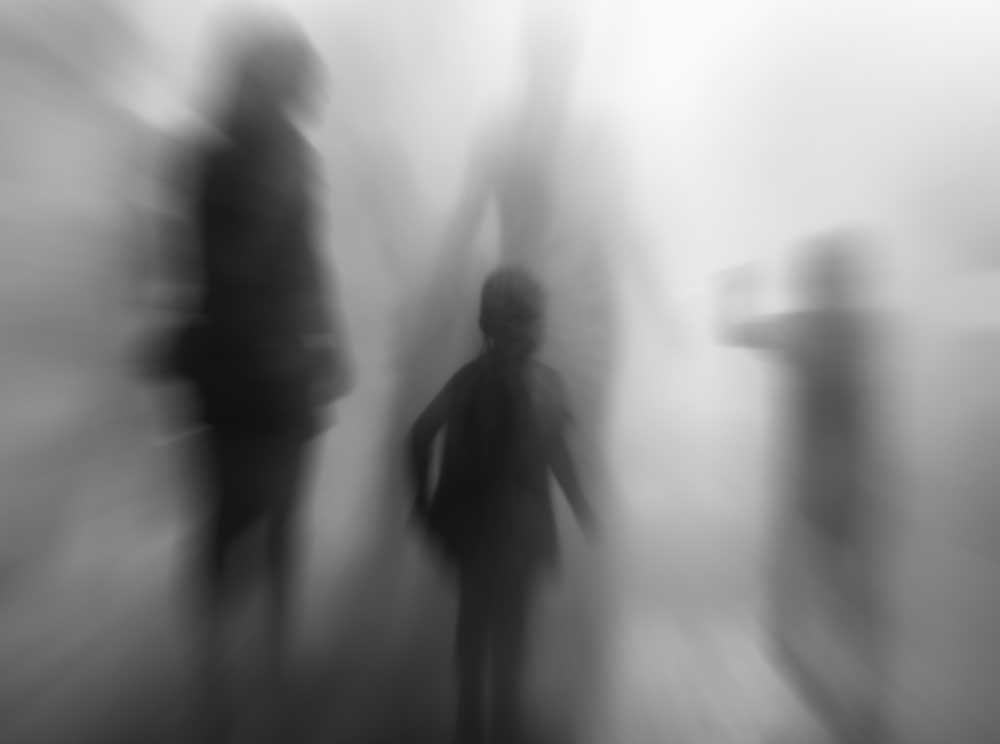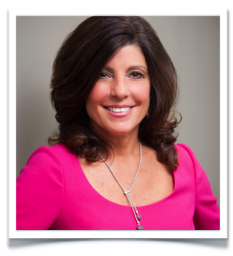Shadow-making happens in families and makes us who we are. It leads us to shadow-work, which makes us who we can become.

Families define who we are; we are born into families, contained in families, nourished by families, and cherished by families.
At the same time, we are neglected by families, betrayed by families, and witness violence in families. In the end, we die among family.
The family holds so much power, the source of all good, the defense against evil. It ties each individual life to its fate, imprinting it genetically, biochemically, and psychologically with blessings and curses. To imagine life without family is to imagine life without a container, without a ground on which to stand.
Our Family Image

In the last thirty years, as a society, we have come to realize that our image of the family is just that, an image.
But it’s not just an image… it’s a fantasy that drives us because this family image compels us to bond, to love, to re-create ourselves, to form what we know as our family. We are biologically wired to yearn for comfort, understanding, safety, and acceptance from our family; this is where we find home. More than a place… home is the dwelling of the soul.
However; many families deliver us into the very kinds of suffering from which they promised to protect us. We witness love and violence, promises and betrayals so we also realize home is also the dwelling place… of the shadow.
Family Soul
Many homes sacrifice the family soul to maintain the illusion of the family persona. When this happens, the family shadow erupts ripping apart the fabric of life for its members.
Like each individual, each family has a persona, a proper mask worn to gain acceptance in a unique subculture.
For example, the image may be to wear the appearance of nice, honest, hard-working, churchgoing folks. Still, others may hold an ideal image of a highly educated, cultured family appearing to have wealth and elitism.
Whatever the persona, any negative behaviors and traits (rage, jealousy, adultery, greed, laziness, addiction) as well as devalued talents (artistic, athletic, gifted) lie just beneath the surface, masked by the family’s proper presentation and forming the family shadow. This develops naturally and the family members identify with the ideal characteristics, such as politeness, humility, and buries the qualities that don’t fit the family image, such as rudeness, or self-centeredness.
Together the family persona and the family shadow develop creating life experiences for each of its members.
Family and society play a huge role in determining what is allowed to be expressed and what is not. For some families, emotional vulnerability and sharing emotions are encouraged; for others, they are banished into the shadows. For other families, artistic talents are supported; for others, they are considered a waste of time.
Anything can become shadow content… it’s not determined by the nature of the material BUT by how the family members RELATE to it! Our biggest fear as human beings are feelings of rejection and abandonment, so we will banish what is deemed inappropriate and sacrifice our authentic selves.
Each of us remains unconscious of our personal shadow material so family members remain unconscious of the family shadow which contains buried secrets like a treasure stowed away in the attic.

Family shadows may pop up unexpectedly, acting out in breaking the family rules (“We don’t use that kind of language here”), impulsive acts (a child is caught stealing), compulsive behaviors (a teen suffers from an eating disorder), mood disorders (depression and anxiety).
It can also be projected when a family member gets angry and blames another trait, he can’t accept in himself. (“I can’t stand when you cry like a baby and don’t act like a man”), or when one parent disowns a child’s bothersome trait (“That comes from your side of the family”).
Families also hide from the shadow by creating triangles. Partners might avoid conflict or reduce anxiety by focusing on a third person and projecting the shadow over them. A husband may displace his controlling anger at his wife by routinely punishing a child. A wife may bond too closely to with a young son, turning him into her idealized spouse and leaving her adult spouse holding the shadow.
A family unknowingly may turn one child into “the black sheep”, a scapegoat for the whole group, so the others may carry on business as usual. As a result, the third person becomes the Other, the identified problem, keeping the status quo but masking deeper underlying patterns.
The family persona and shadow play against each other and keep the members concerned with the outer props of life… the appearance of decency, financial security, the children’s education caring for the next generation. But privately, deep in their souls, many feel as if they missed the boat; they suffer from the idea that they have failed as partners and as parents. They surmise that there MUST be more to family life than this façade!
The Missing Ingredient: The Family Soul

The family soul is defined as a natural environment or a psychic space that ALLOWS for the authentic unfolding of family members’ individual souls.
For example; when adults try and understand and honor the child’s feelings, teaching them to talk things out and offer a constructive outlet, such as maybe a physical activity which helps the feelings to move through them hopefully create a better understanding about themselves.
- When the family soul is present, the members feel contained; they carry an internal connection with the other, rather than an imposed or obligatory relationship.
- When the family soul is palpable, the members feel deeply at home, seen and accepted for who they are.
- When a family soul can be felt, its members do not have to hide.
- When the family soul is present, the members feel genuinely loving toward one another and loved by one another.
- When soul-centered family honors individual differences and may even welcome, rather than repress conflict. It encourages learning and exploring new attitudes, feelings of competencies rather than limitations and conformity.
- The family soul works together to meet challenges and plays together to share the joys of life. It is a safe place to recharge the human soul.
When the façade or family image is strong… the space for the soul shrinks.
Family members’ capacity to be present with each other in an authentic and vulnerable way is limited. Unconsciously, they fear risking disclosure because their feelings will be seen as unacceptable to those whose acceptance they depend upon, they fear they will be shamed and punished.
THE WORST PART IS THEY HAVE TO HIDE FROM THE VERY PEOPLE WHO COULD OFFER THEM HEALING AND ACCEPTANCE.
The good news?

All of us have the ability to make the unconscious conscious by opening our awareness to a higher order.
Instead of unconsciously learning to BURY our wounds, we consciously LEARN what our triggers are, identify our projections and deepen our empathy for others and for ourselves. In this way, the betrayal and its wound become a vehicle for soul-making.
If one person in a family makes a wound conscious (“Yes, I can see how I failed you in that way”) then the individual can bring reconciliation to the group, creating the potential for greater family awareness and the emergence of the family soul.
Questions to Help Make the Shadow Conscious

- What lies in your family shadow?
- How is the family soul sacrificed in your home?
The hard-core truth… reenacting family dysfunctional patterns seems to be the “shadows” cruel way of challenging us to learn the lessons our ancestors have failed to learn.
Think about this: our elder’s hidden conflicts, anxious worries, and buried wishes are absorbed by vulnerable young minds, leading to the same attitudes, gestures, and emotional states.
Children pick up hatreds, depression, fears, and addictions even if they are mentioned out loud. This happens in a variety of ways.
If a man continually makes belittling looks or degrading remarks about his wife’s appearance, he shames her in front of the children. They, in turn, begin to devalue her, naturally identifying with the more powerful parent. At an unconscious level, the children absorb sexism in learning to devalue the role of wife and mother. At the same time even though the shame was not directed towards them, because they love and identify with their mother they internalize her reaction. In this way, they themselves are shamed and they learn shaming behavior. They develop a shame complex, becoming sensitive to rejection, eager to accept blame, and hungry for acceptance and approval. The soul feels unworthy, debased, and unlovable, anxiously anticipating the next shaming moment.
Shame is the gatekeeper of the family shadow.

It props up the family facade and reinforces denial. It encourages projection and guards against any new knowledge that might puncture the family image. Shame divides us from ourselves and from those we love. It banishes the family soul. For all of these reasons, arenas of shame point towards healing; they carry the potential for the restoration of authentic feelings.
Who shamed you? Who do you shame? What is the deeper need lying hidden in your shaming behavior?
The first step to understanding ourselves is by separating out our identities from those of our parents, from our inner parent voices, and from the larger cultural influences we have been taught. Only then can we provide ourselves as adults with those essential qualities and authentic feelings that we may have missed as children and that will nourish our souls.
Recognizing our Triggers
- Mechanical and Repetitive thoughts: “I’m too dumb, I’m too fat, I need to get high; people don’t like me….”
- Intractable feelings: fear, guilt, sadness, anger.
- Bodily sensations: tightening in the abdomen, chest, or throat; a feeling of emptiness; a craving.
By recognizing what is happening and how it starts you have the opportunity to practice witnessing your triggers instead of reacting to them.
The next task is to recognize that this thought, feeling, or sensation is not WHO you are; this is not your identity, your SELF.
It is a family pattern and a shadow you have carried.
To further understand yourself ask:
- What do you REALLY need?
- What do you REALLY want?
- What voice have you been listening to from your past that is preventing you from being yourself?
The shadow is usually highly critical and lacks compassion; usually, there are 2 shame tapes that begin with;
- “Who do you think you are?” and
- “You are not enough.”
Tracing the roots of this inner critic is helpful by recalling a recent time when you fell into the same self-sabotaging patterns.
- Have you disregarded your own needs or boundaries by making a commitment that you did not want to keep?
- Maybe you remained silent when you wanted to express your authentic feelings?
- What thoughts feelings and sensations stopped you?
- What part of your inner critic has told you not to express yourself? What is it saying?
When going back and tracing the history of this pattern can you recall an earlier time in your life when you experienced the same inner messages, emotions, or bodily sensations?
Once you understand the history of this pattern and trace the roots, you will see that your reaction in the present moment is really a reaction from the past. It is a shadow figure that attempted to protect you from reexperiencing an emotional wound, which instead sabotages you in the present.
You will benefit from discovering the consequences of continuing to obey or disobey these dysfunctional family patterns.

You can begin to observe yourself falling into automatically doing the same dysfunctional behaviors.
We acknowledge we have created our own suffering….If you choose to respond in a new way, realign with the voice of the SELF and feel revitalized as the family patterns recede into the background.
As you begin to trust the wisdom of the SELF you will have the compass you need to sail on the stormy sea of life.
As I was writing this blog, the first draft that took me four hours to write was accidentally deleted!
My first response was anger at myself for not saving it differently on my computer, overwhelmed in trying to remember what I wrote, and going into shame about my mistake.
I was able to take time to sit and be uncomfortable with not being able to fix it, and that was difficult for me. I decided to allow myself to observe where these feelings were coming from what my SELF wanted to do about it.
I decided to get up early, rewrite it, and do my best… so here it is and hopefully, you will be able to be kinder and more compassionate to yourself by discovering the authentic pieces you have hidden… they are waiting for YOU!

Maria Bucci, M.Ed LPC DWC-F. Daring Way Facilitator by Dr. Brené Brown


Hi!
Loved your article.
Do you do Psychotherapy?
How d0 I get certified for THE DARING WAY facilitator?
Hi Angela,
I appreciate you reading my blog! I am a Licensed Professional Counselor and use a variety of therapuetic techniques with my clients depending on their concerns and needs. You are able to get certified by going to Brene Brown’s website and following the directions on becoming a facilitator. It was a fantastic experience, you would really enjoy it! Best wishes for 2022!